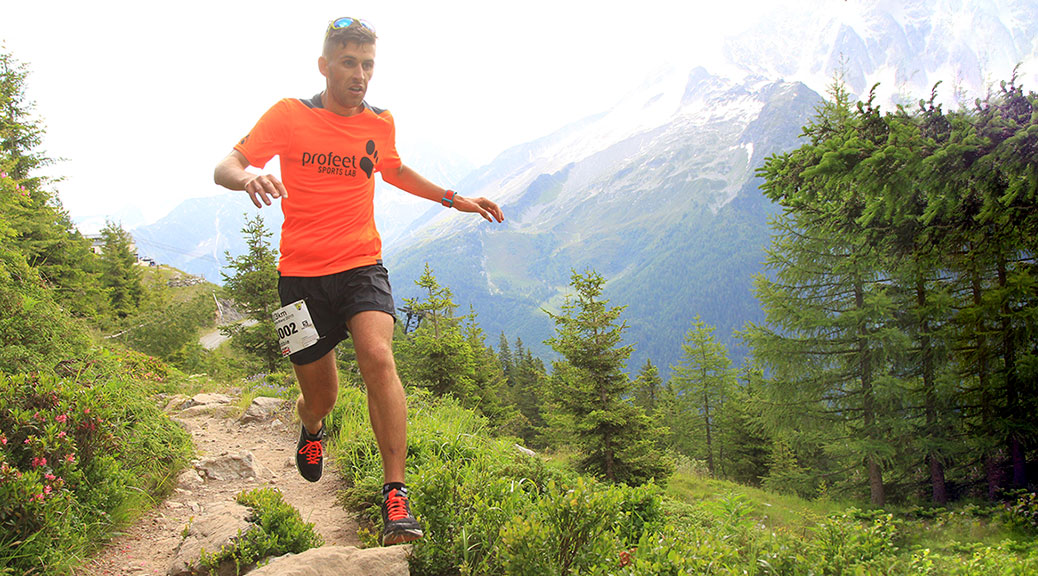What does it take to run an ultramarathon? And, more to the point, who are these people who spend hours and hours trudging the earth and scoffing picnic eggs to prevent exhaustion? Olivia Hubbard talks to big name on the ultra campus Robbie Britton, who likes to run far … really far.
Two runners, two filmmakers, one big island. Running the entire way across Iceland is a cold, wet, exhausting experience. So is filming it. Follow @thatcastrochap and @ultrabritton for more information.
Video credit: Dan Castro (mistercastro.co.uk)
Being Robbie Britton
Olivia Hubbard: Surely you can’t just go from 10ks to the serious stuff?
Robbie Britton: I started with a muddy half-marathon because a friend signed up and then the same for a marathon a few months later, but then it just went up and up. I think I did 26 [miles], then 40, 40, 56, 83 (in three days), 45, 66 (in two days), three months off with an injury and a chance to sail the Atlantic, then 56 and 100 miles. That was over about two years, so quite quick – but I had always been sporty. After that, I just kept looking for longer and longer races, searching for my limit. It took about two years of racing before I decided that being a bit more selective and a bit more competitive was much more fun.
OH: What training commitment are we talking about here?
RB: It varies during the year and during the racing calendar, [depending] on the race, what I’m concentrating on and where I am. At the moment I’m doing about 15-16 hours a week on skis with a mix of cross country and ski mo, possibly building that up to 20+ hours a week while I’m not doing the heavy impact of running. During the summer, it most likely won’t be as high a weekly time running but it will be supplemented with strength and conditioning work, some easy cycling and maybe a spot of climbing or mountaineering. I’d say it’d be 12-16 hours of running in peak weeks, with double days and a longer effort at the weekend.
OH: Tell me about your relationship with the treadmill.
RB: I’m not a massive fan of the treadmill as my mind doesn’t deal very well with it and I’m constantly thinking about how not to fall off, which just isn’t enjoyable. If I have to do sessions on a treadmill I try to include short, fast intervals that keep the mind away from the clock.
OH: Tell me about your competing/completing theory?
RB: Your emphasis changes in a lot of ways when you’re changing from aiming to complete a race to trying to compete with others – and not always in a good way. For some, it can take the enjoyment out of the journey and the race itself because you become too obsessed with what others are doing and don’t focus on yourself. Any ultra should be about competing with the course first rather than those around you, but it is satisfying to be so confident with experience and training to know you can finish regardless and try to race others around you.
OH: Some may say running for that long is ‘boring’.
RB: I’ve done all-night raves and been bored by about three or four in the morning because it just gets a bit repetitive and some parts of 24-hour road races can get a bit monotonous but you find ways to entertain yourself. On the trail it is far from boring – your mind is always active, watching your footing, taking in the sights around and thinking about what’s to come. I might take their comments a little more seriously if they give it a go.
OH: What are your career highs and lows?
RB: My career high was getting a team gold and individual bronze for Team GB at the World 24hr Running Championships in 2015. Nothing else even comes close to how I felt in that final hour. As for lows, there have been plenty of those but I like to think I’ve learned from all of them and don’t see them as negative experiences.
OH: What has been your favourite race and why?
RB: UTMB (the Ultra-Trail Mont Blanc) … for the mountains, the atmosphere and the music at the start of the competition – that race speaks to me.
OH: And your favourite running shoe?
RB: Currently I’m using the Salomon Sense Ultra 4 SG and it’s been a rollercoaster ride, but now we’re friends. Adidas Adizero is always a good shout but I wish they’d stop tinkering with the trail shoes so much.
OH: Tell us about your worst mile.
RB: In a 100-miler it is normally around 25-30 miles when your legs start feeling tired and I always think “oh no” but it happens every time. You’re supposed to feel a bit tired in the legs after 25 miles, but it doesn’t really get any worse. You just keep going.
When I’m close to my limit I normally start wanting to lie down on the floor and have to avoid staggering around like a drunk a little bit. It’s normally just that I need some food or drink though, so fixing that sorts me out and off I go again.
OH: What are your kit bag essentials?
RB: Nearly every 100-miler I do needs a great head torch and I use the Petzl Nao because it lasts for ages and blasts out a light that covers the whole trail. The only 100-miler I didn’t use a head torch on was the Petzl sponsored South Downs Way 100, which I finished in the hours of daylight. How’s that for irony?
OH: What’s in your lunchbox?
RB: Rice cakes, sweet potato brownies and other bits. When we ran across Iceland in October 2015 I was eating a lot of Chia Charge protein bars as it was a big adventure and I wanted my body to recover each night, but I’ll often eat sweets like fruit gums or skittles as I rather enjoy those.
My pre-race meal is simple porridge with water, some banana and nut butter. Otherwise I make up a little bowl of rice with jam and nut butter if travelling away.
OH: Do you find it hard to discipline yourself to rest?
RB: When I overdid it in the build up to Spartathlon it was hard to completely rest and wait for race day because you just want to be firing on all cylinders in the last block of training before the race, but the best thing for me at that time was rest. I had invested a lot of time, money and time of loved ones into that race and I felt like I was letting them down a bit, but I still went out and gave it my all. I wouldn’t have even made it to the start line without the sports masseuse Simon Lamb, who I was working with at the time. He saved that race.
“We always associate training with getting better but that isn’t always the case, as rest is just as integral in growing stronger. It took me a while to realise this but now I don’t see rest as skiving off but as an essential training session. I rest like a boss and watch a lot of Netflix. I like the idea that you don’t over-train, you under-recover. When you think of it like that, you can really boost how well you work.”
OH: Can you talk me through the changes in emotion over the course of 100+ miles.
RB: Running 100 miles is a journey all in itself and it can get a little painful at times but the mind suffers in some strange ways too, making you see things in the dawn light that aren’t there, like your crew or an aid station – things you want to see when you’re tired.
Click here to turn the page and find out Robbie’s top training tips and where he goes for his running education.







